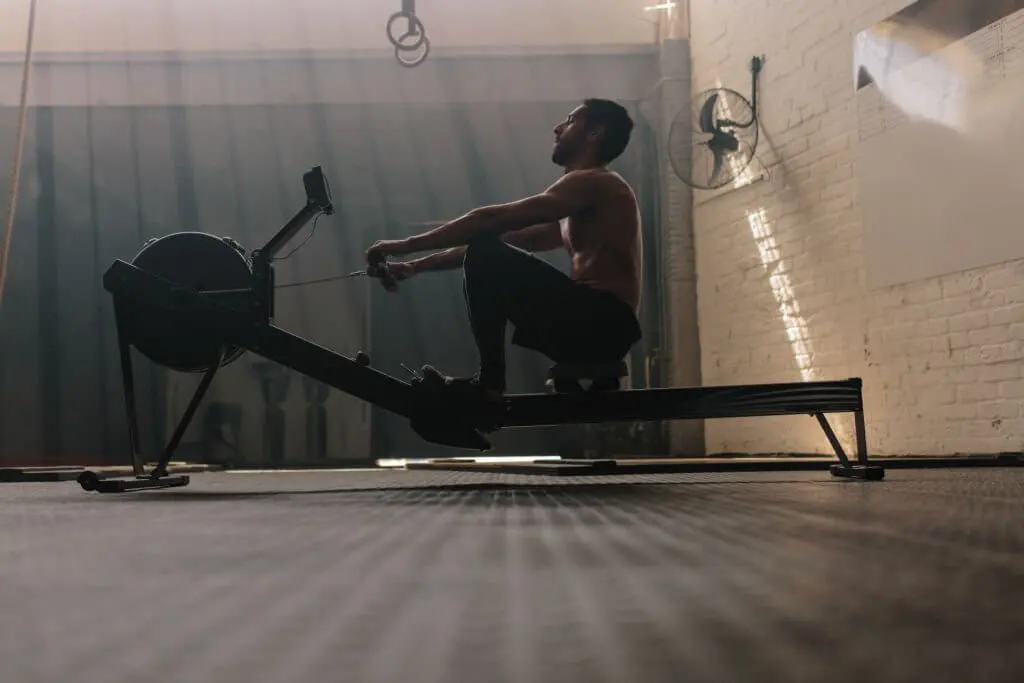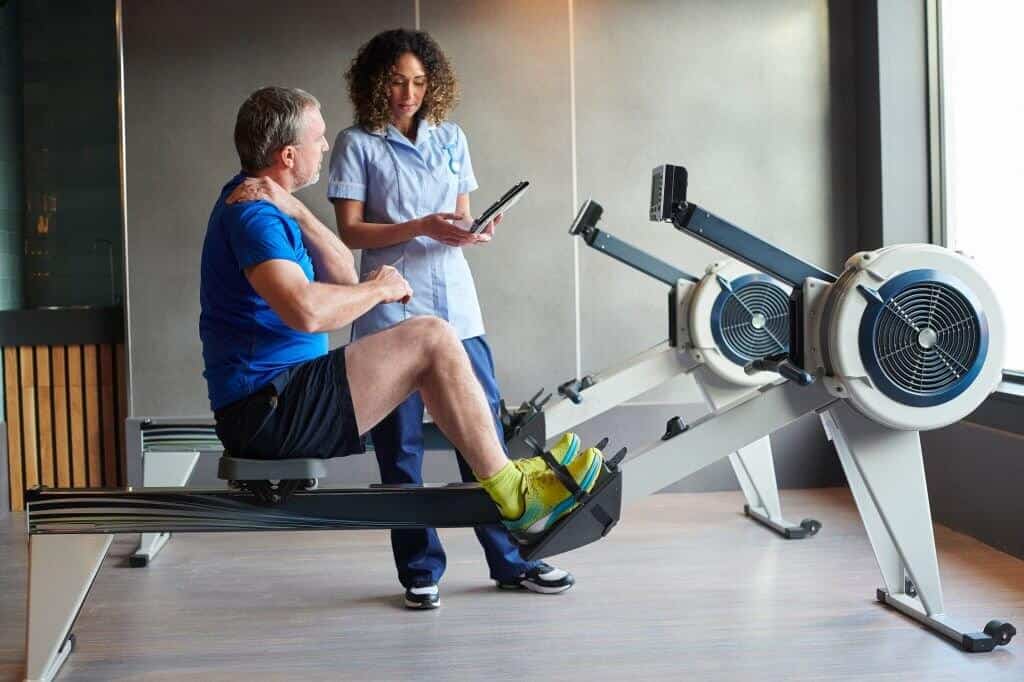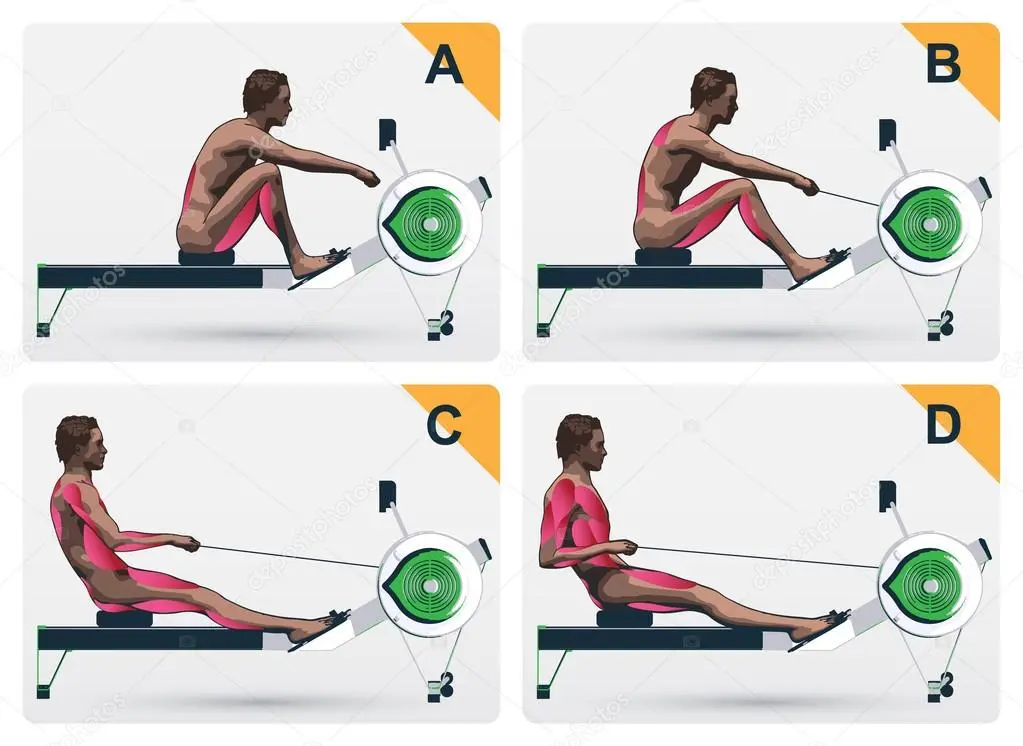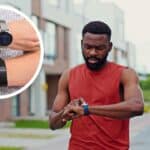Wonder what is a rowing machine good for?
It’s nearly accepted home decor: The uninspiring treadmill underneath stacks of out-of-season clothes. Elsewhere, the abandoned elliptical. Every grandpa must have a late 70’s airdyne.
But if it’s a rowing machine you see, it often tells a different story.
It’s simple, not sexy. No HD touchscreen. A stiff seat. Always awkward at first. Your haphazard exerciser isn’t likely charmed by it.
But you’ll probably find it an accessibly kept tool like a household hammer. As handy as one too. You see a row machine, it’s open for business.
Based on our testing, this is the best rower for beginners. For less than 500$, this silent water rower will last you for years. It also comes with a 12-year warranty.
- Affordable
- Quiet
- Amazing warranty
Of course, in part, thanks to CrossFit, they’re seen in hordes and used every day in group settings for warm-up, multi-modal fitness programs, or as a prioritized cardio machine.
And it isn’t a niche. It’s for everyone and any type of athlete. Novice, injured, weekend-warrior, or elite –anyone willing to give it the time it deserves will benefit across the broad spectrum of fitness.
Jump to:
Three reasons you need a row machine.
So here are the three biggest health benefits to rowing, and various ways you can place it in your routine.
1. Energy System Work

The most glaring physical benefit to rowing is the ability to get an effective full-body workout on a cardio equipment. Powerful movement of the leg muscles supported by effective bracing at the core –spinal erectors and abdominals, engagement of the posterior-chain, stability of the upper back, strength in grip and pulling muscles of the upper body, head-to-toe is in play.
It’s similar to many popular compound movements, those that impose cascading physical adaptations for fitness and health, and is markedly unique compared to more isolated cardio workouts options like biking or running.
Because of its comprehensive demand, it’s home to potent sprint-style efforts, all the way to great enduring events. Give your best test on a 500m Row (a sub 2:00 all out effort), or a sub 20:00 5k Row, and the end result will likely be the same: the gasping user rolling off of the seat into a sweat puddle. With this capability, there’s strength to be gained, aerobic-efficiency to be trained, and more options than one could ever grow bored of.
From the short…
Interval sprints on the rower are as potent as they are at the track or on the air bike. When athletes perform numerous, short bouts of high energy, they’ll be increasing their anaerobic threshold, power output, and sustaining higher heart rates for longer periods of time, all while supporting their accompanied muscle strength routine.
The distance/time domain will greatly impact the relative intensity of course, but the rowing machine provides for all varieties. With its massive rep cycle, and potential demand for energy, even the shortest all-out bursts of 10-20 seconds (phosphagen system) are worthy of your attention in programming.
Example Progression:
- Workout 1: Row 250m every 3 minutes for 10 sets
- Workout 2: Row 300m every 3 minutes for 10 sets
- Workout 3: Row 250m every 2:30 minutes for 10 sets
Try to create your own progression by increasing the distance, pace, or decrease your rest time week by week. If you’re able to keep consistent pacing across the sets (giving a generous effort) then you’re probably on the right track.
…to the Long
Of course the rowing machine is built for distance too. Three of the five preset rowing machine workouts on the Concept 2 machine are efforts likely to take fifteen or more minutes. The 5k, 10k, and 30:00 are common benchmark tests.
Choose a test, and either maintain sub-PR pace for greater distances to build endurance, or jump up the intensity above PR pace with long-intervals in training.
Examples:
(Based off 5k Row Test)
- Workout 1: Three sets: Row 1250m @ 105% of PR 5k Pace
- Workout 2: Row 6000m @ 85-90% of PR 5k Pace
- Workout 3: Four sets of: Row 1000m @ 105% of PR 5k Pace
2. Injuries and Adaptation

Throughout an exercise career, nagging injuries, serious, and unserious “dings” are bound to happen. There are few pieces of equipment as versatile as the rowing machine for working around injuries while getting the most out of a workout routine.
Loading
Take for example a minor lateral quad injury. The relative load of even a body weight squat can be too much for ample recovery of a tendon flare or a pulled muscle.
A rowing stroke, likened to the lifting of a barbell in the deadlift, only requires the chosen effort of the user, like an automatically varying weight on a barbell. It can also serve as a way of moving through a complete range of motion without the aggressive loading of externally weighted or even bodyweight movement.
The return to the rower, or the “recovery” phase, is virtually unweighted and very low-impact, making the movement even more agreeable to recovery. Potential modification to the form or stroke may be necessary, but is only limited to the creativity of the individual.
Swapping machines
Perhaps a workout has running, or biking involved like a common multi-modal conditioning piece in the CrossFit gym. Running doesn’t feel great on the ankle today, and skiing and/or biking might be counterintuitive to the intense workout stimulus.
Multi-modal workouts, i.e. CrossFit WODs often use complimentary movement to drive intensity. Maybe assault bike quad-bursting sprints isn’t the best running substitution before numerous hang squat cleans. There’s always an appropriate match for the energy demands of any cardio piece that can be made on the rower.
More on blending
Aside from the multi-modal CrossFit program, if you’re into bodybuilding, well, you can use this machine to create generous pre-exhaust sets, or to create a fiery antagonistic blend. Try 10-20 hard rowing strokes prior to sets of pull-ups or bent-over rows. “Pre-exhausting” a major muscle group is an excellent pairing with linear style programs for variation or when equipment selection is basic.
Or, instead of adding weight to your hip extensions from last week, try initiating it with twenty hard rowing strokes. Then there’s rowing and bench press –an excellent push-pull combination. This keeps working out fun, variable, and is another method to increase that pump!
Based on our testing, this is the best rower for beginners. For less than 500$, this silent water rower will last you for years. It also comes with a 12-year warranty.
- Affordable
- Quiet
- Amazing warranty
3. The carryover
In the beginning stages, the rowing stroke can get harder the better one becomes at it. As for any lift, there is proper form. A technically-sound stroke means greater potential power output with each “rep,” and more work being performed. This is one of the reasons novice rowers who eventually find their catch and drive positions also find themselves stopping, out of breath and confused as to why they’re unable to go as long as they did just a week or two ago.
This is perhaps one of the more addicting qualities about the rower. To the likeness of various athletic movements in the gym, the row stroke also follows the principles of “core-to-extremity.” You can’t outwork a poor rowing sequence by pulling with your arm muscles more aggressively. You can’t produce high energy by beginning in a poor “catch” or start position. The amazing benefits of rowing machines only grow with increasing awareness of positioning, timing, and coordination.
Better off the rower
For that, there is tremendous adaptability to various form of exercises. And that isn’t only because of its required range of motion to complete the task. It is the sequence of events that make learning the rowing stroke an opportunity to improve other similarly sequenced movements. The rowing stroke requires:
- adequate bracing and tension in the start position.
- initiation of the movement with the legs.
- Hip opening or a torso angle change, i.e., hip extension.
- extremities (the arms) pulling the handle to finish the stroke.
The olympic lift, the clean, has an almost identical series of events. Set-up, leg extension, violent hip extension, and extremities (the least powerful movements last) guiding the bar to the finish position atop the shoulders.
Conveniently the “power curve” is a graphic display of the power-sequence on the Concept 2 Row machine. It should be illustrated as a “hill” with two slopes, not a downhill grade with its peak at the beginning of the movement.
The four phases of the rowing stroke
What is correct positioning in all phases of the rowing stroke, and how does one look to improve?

The four phases:
Catch – The start position
Drive – The power curve – Leg drive and hip extension
Release – The handle being pushed away from the body
Recovery – The slower return to the start position to repeat the cycle again
How to apply this practice? The pick-drill is a great place to start. Again, like the power clean: a beginner does not start effectively (or safely) performing the clean without first diving into the finer details of timing, positioning, and drilling.
Perform sets of 10-15 of each of these movements:
- Arms only
- Arms + loading the hips
- Half slide (bend knees until handle is to ankles with straight arms)
- Full slide (bend knees until heels want to slightly come off the foot mounts)
But, a proper technique first
Above all, the row machine deserves the same level of attention and detail as any other movement in the gym. No, not because you will injure yourself with a quad dominant pull and your seat bumping into your heels. But with proper rowing technique, and devotion to practice, your options become limitless. Find yourself a rower, and keep your winter coats off of it.
form of exercise















